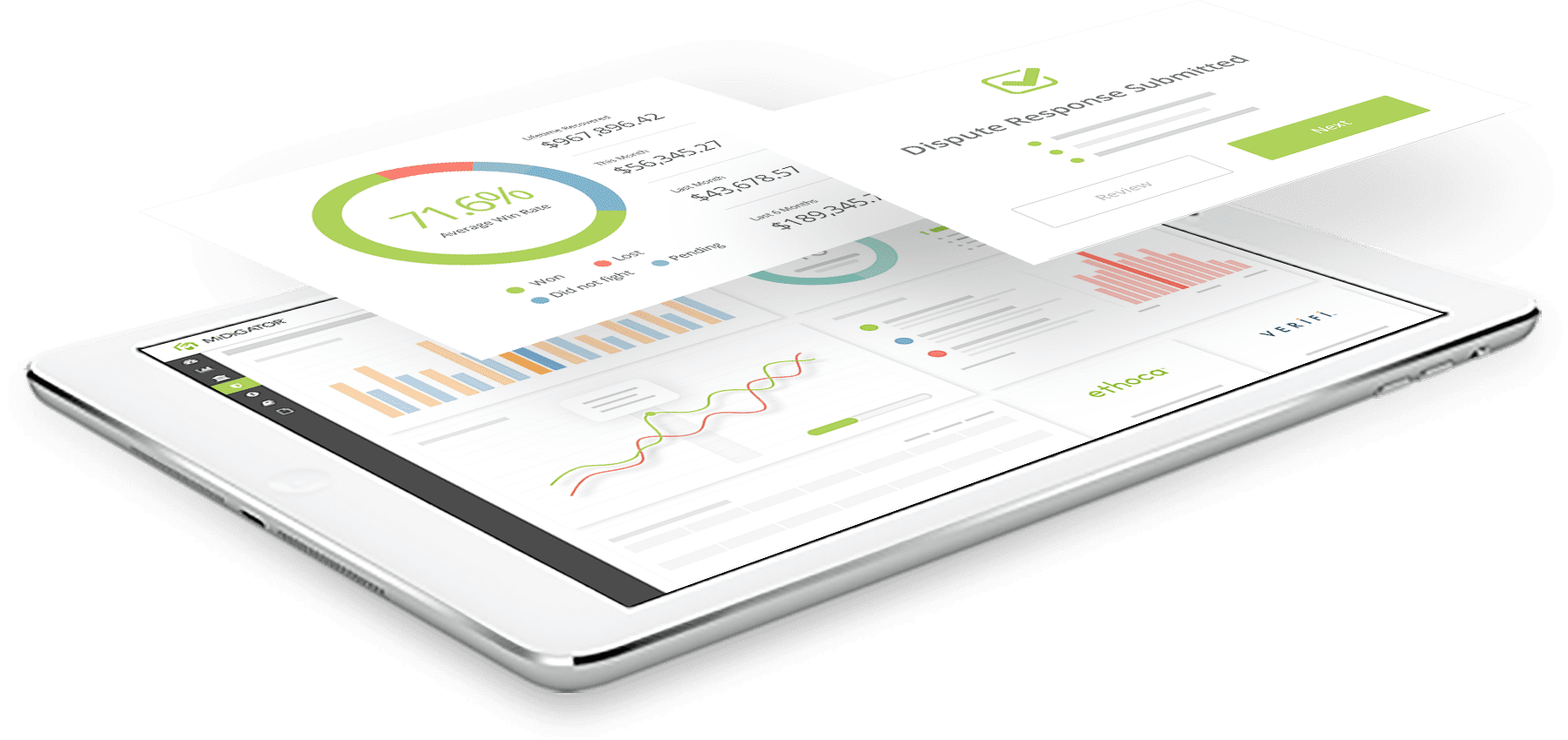8 Chargeback Prevention Strategies & Management Tools
- May 25, 2021
- 5 minutes
Wouldn’t it be nice if there was a silver bullet for chargeback prevention? A single tool that could completely eliminate risk?
Unfortunately, the most complete protection comes from a multi-layer approach — a variety of tools used at various stages of the transaction lifecycle.
While each chargeback prevention strategy is different, some combination of these eight tools is usually best.
1Fraud Deflection

Who offers this tool? Numerous vendors (call us for specific recommendations)
Where does this tool sit in the transaction lifecycle? Usually pre-authorization
What does this tool do? The functionality of this tool depends on the vendor you choose to work with. Some fraud deflection services verify the identity of the shopper. Others specialize in detecting suspicious order details.
In general, a fraud deflection tool helps you stop transactions that are likely to result in chargebacks before they are processed.
Why is this tool important? A chargeback is justified if the purchase wasn’t authorized. These disputes can’t be challenged. Since you have no recourse, it is imperative that illegitimate transactions are stopped.
2Address Verification Service (AVS)

Who offers this tool? Your processor or gateway
Where does this tool sit in the transaction lifecycle? Pre-authorization
What does this tool do? AVS compares the billing address provided during checkout with the address on file with the card issuer.
A mismatch could indicate the shopper is attempting an unauthorized purchase, as the cardholder would likely provide accurate personal information.
Why is this tool important? This chargeback prevention tool serves two functions.
First, you can decline seemingly high-risk transactions based on AVS results. This means you can stop more bad transactions from being processed — transactions that would ultimately result in chargebacks.
Second, AVS results are used, in part, to determine liability for Visa’s allocation disputes. If you don’t use AVS, you may be found liable and receive more disputes than what is warranted. But, if you have a full AVS match and the cardholder is claiming fraud, your defense will be much stronger.
3Card Security Code Verification

Who offers this tool? Your processor or gateway
Where does this tool sit in the transaction lifecycle? Pre-authorization
What does this tool do? Every card has what’s called a card security code (sometimes referred to as CVV2, CVC2, CID, etc).
If you ask for this code during the checkout process, your processor will relay the information to the card issuer. The card issuer will either confirm or deny a match.
A mismatch could indicate the shopper doesn’t have the card in-hand — for example, stolen account information is being used by a fraudster.
Why is this tool important? Card security code verification fulfills a very similar function as AVS when it comes to chargeback prevention.
Data can be used to decline transactions with a high likelihood of turning into chargebacks. And, CVV2 results are a determining factor in liability assessment for Visa allocation disputes.
43D-Secure 2.0

Who offers this tool? 3D-Secure 2.0 providers (call us for specific recommendations)
Where does this tool sit in the transaction lifecycle? Pre-authorization
What does this tool do? 3D-Secure 2.0 (known by network-specific products names including Mastercard SecureCode and Visa Secure) is another identity verification tool.
Merchants send various transactions details, such as IP address, device name, etc., to the issuer for verification. In real time, the issuer is able to compare the provided details with what the bank has on file. Then, the transaction will either be labeled low risk and the merchant can proceed or it will be identified as high risk and the cardholder needs to take additional verification steps (likely entering a one-time password).
Why is this tool important? Just like AVS and card security code verification, 3D-Secure 2.0 is a two-fold chargeback prevention tool.
Results can help identify high-risk transactions — purchases that should be declined. And, Visa Secure (formerly Verified by Visa) results are taken into consideration when liability is assessed for allocation disputes.
5Blacklist

Who offers this tool? Your in-house team can maintain a blacklist or Midigator® offers a collective blacklist
Where does this tool sit in the transaction lifecycle? Post-authorization
What does this tool do? A blacklist is a dynamic database of customers who have charged back or filed a dispute.
If the list is integrated with your CRM (customer relationship management platform), the technology can flag orders placed by customers who exist in the database. Then, you can either automate cancellations based on predetermined risk indicators or you can manually review the orders.
Why is this tool important? If you notice a new order is from someone who has previously disputed a transaction, you have the option to cancel the purchase since it has a high probability of turning into a chargeback.
This helps keep chargeback counts low and merchant accounts healthy.
Plus, a blacklist is the only post-authorization tool that helps prevent the loss of merchandise and shipping fees. If you don’t catch high-risk transactions with a blacklist, you’ll triple your costs — you’ll lose merchandise, you’ll pay for order fulfillment, and you’ll receive a chargeback or alert fee.
The value of a blacklist increases if you access a communal blacklist in addition to your own in-house data. With a communal blacklist, you’ll be able to cross-reference data supplied by other merchants from different verticals, payment processing platforms, and geographical regions.
6Order Validation

Who offers this tool? Mastercard’s Consumer Clarity and Visa’s Order Insight are offered through certified resellers, such as Midigator
Where does this tool sit in the transaction lifecycle? Post-authorization
What does this tool do? Order validation tools enable you to communicate with issuers in real time to validate the cardholder’s purchase. The goal is to equip issuers with the information they need to “talk off” disputes before they occur.
Why is this tool important? Some chargeback prevention tools are able to resolve the dispute and avoid damaging the chargeback-to-transaction ratio. However, revenue is still lost.
Order validation tools are unique in that they have the potential to resolve the dispute and prevent revenue loss.
You can respond to inquiry requests and share detailed transaction information with the issuer. If this insight successfully clarifies the transaction with the cardholder, you can prevent the chargeback and keep the revenue.
7Prevention Alerts

Who offers this tool? Verifi, Ethoca, and reseller partners
Where does this tool sit in the transaction lifecycle? Post-sale and post-VMPI
What does this tool do? Prevention alerts are another tool that enable you to communicate with issuers in near real time to resolve disputes.
Participating issuers will alert you when a cardholder has disputed a transaction. If you are able to refund the transaction and notify the alert vendor within 24 hours, the dispute will be settled — without a threshold-damaging chargeback.
Why is this tool important? Prevention alerts are the last opportunity to resolve a dispute before it becomes a chargeback.
If a chargeback-inducing transaction has passed through all your other protective barriers, this is the last chance for chargeback prevention.
8Analytics

Who offers this tool? Midigator
Where does this tool sit in the transaction lifecycle? Post-chargeback
What does this tool do? Analytics reveal patterns. Anomalies to those patterns indicate hidden issues.
Identifying hidden issues helps determine why chargebacks are happening so you can solve issues at their source.
Why is this tool important? Analytics play a vital role in chargeback prevention.
Without analytics, your chargeback prevention strategy is:
- Based on hunches and guesses
- Capable of producing only short-term results
- Reactive
- Highly susceptible to false positives and unnecessary revenue loss
With analytics, your strategy is:
- Based on intelligent, data-driven decisions
- Capable of generating sustainable success
- Preemptive
- Optimized for maximum ROI
Do You Need to Add More Tools to Your Chargeback Prevention Lineup?
How many of these eight chargeback prevention tools do you use? If you aren’t using all of them, it might be time to engage in testing — see if adding more layers can increase your ROI.
If you’d like a one-stop-shop for chargeback prevention, Midigator can help. Managing all tools from a single portal increases transparency and efficiency. Adding Midigator’s automation can also make your chargeback prevention more successful and cost-effective.
Sign up for a demo today to see these chargeback prevention tools in action.
 Customize My Demo
Customize My Demo












